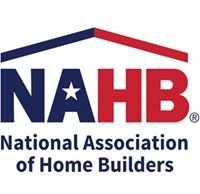WASHINGTON, D.C. – November 7, 2011 – (RealEstateRama) — According to an online house price estimator and economic model just updated by the National Association of Home Builders (NAHB), a third full bathroom is the one feature that can have the greatest impact on the value of a standard new single-family detached house in a Southern suburb, increasing the estimated price by about $43,000.
The estimator enables builders, developers, prospective home buyers and home owners to see the impact that various physical features might have on the price of a home.
“In an economic environment where consumers are particularly price-and value-conscious, this is an important resource for assessing key features and characteristics that help determine housing prices,” said NAHB Chairman Bob Nielsen, a home builder from Reno. Nev.
“To get the most out of the estimator, those using it need to understand that the nation’s housing marketplace is actually comprised of thousands of local markets and submarkets, with their own dynamics,” he said.
The estimator “shows what households are looking for in their homes and zeroes in on basic factors that enable Americans to shape and improve their lives through their individual housing choices,” Nielsen said.
Looking broadly at the four principal Census regions of the country and the urban status of areas – central city, suburb or non-metro – the estimator finds a general tendency for house prices to be higher in the Northeast and West, as well as in central cities and suburbs.
The price tends to be lowest for homes built outside of a metro area, although some regional variation exists regardless of urban status.
The model estimates that the standard new home will cost more than $500,000 if it’s built in a suburb of one of the large metro areas in California, but only about $155,000 if it is located outside of a metropolitan area in the Midwest region.
The standard new single-family detached home is defined by features based primarily on averages or medians from the Census Bureau’s Survey of Construction. Among those features: the home has 2,150 square feet of living space, two full bathrooms and one half bath, three bedrooms, a garage, central air conditioning, a fireplace, a separate dining room and three miscellaneous rooms. The home is also in a neighborhood where satisfactory shopping (such as grocery or drug stores) is available within 15 minutes.
In general, the estimator finds that suburbs show higher prices than their companion central cities, which include the areas inside the city limits and not just a central business district or downtown area.
“Because the model uses data from the Census Bureau’s American Housing Survey, which contains somewhat limited geographical detail, the results show averages across a broad region rather than estimates for a particular house in a specific location,” said Paul Emrath, NAHB’s vice president for survey and housing policy research.
“The model captures the impact of various features in considerable detail, but no model or data base can capture all the features that influence house prices,” he said. “For that reason, a home owner shouldn’t think that the addition of a certain feature will necessarily increase the cost of their home by the amount specified by the estimator.”
The price estimator, which can be accessed on computers with Microsoft Excel, can be useful in a variety of settings, he said. Possible uses include: helping builders determine if the cost of providing a particular amenity will be valued by consumers, giving prospective home buyers a rough idea of likely price differences for various home sizes and amenity packages, enabling customers of remodelers to approximate how much a job would add to the value of their home and helping developers price neighborhood characteristics to evaluate the desirability of potential building sites.
The economic model for the price estimator shows that with no modification, the estimated average price of the standard new home in a Southern suburb is $203,874. Moving that home to an otherwise similar neighborhood on the waterfront increases its estimated price by nearly $90,000. And proximity to adequate public transportation raises the estimated price by about $26,000.
Other neighborhood features, the model finds, can reduce the price of the home. The presence of an abandoned building within half a block, for instance, reduces the estimated price of the standard new home in a Southern suburb by about $28,000. Bad roads, odors, lack of adequate shopping, buildings with metal bars on their windows and litter each reduce the estimated price by more than $6,000.
Looking at the physical features of the home, adding 500 square feet of living space with no other changes increases the estimated price of that home by roughly $13,000. Adding another bedroom or miscellaneous room increases the estimated price by less than $10,000. Eliminating the fireplace reduces the estimated price by about $24,000.
NAHB’s Single-Family Detached House Price Estimator can be found on NAHB’s website at: www.nahb.org/housepriceestimator.
To run the estimator, Microsoft Excel’s security setting must be adjusted to allow macros to run. For those who encounter trouble getting the estimator to run initially, NAHB suggests that they try accessing it from a different computer with a different browser.
A special study from NAHB Housing Economics – “NAHB House Price Estimator Updated” – is available at: www.nahb.org/updatedestimator.







